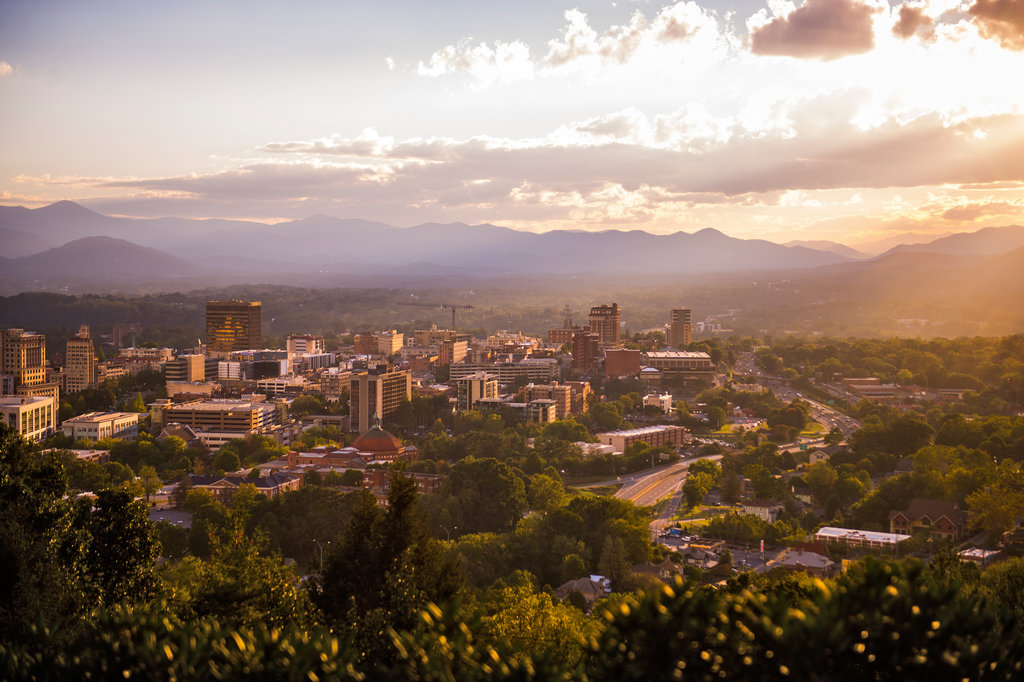The areas in Asheville and around Western North Carolina each offer something a bit different. Some areas in Asheville are more popular than others, with many good reasons why. Our guides to the best and most popular areas and neighborhoods in Western North Carolina touch on what makes each community a unique and attractive place to live.
There are 82 mountain peaks between 5,000 and 6,000 feet (1,500-1,800 m) in elevation in western North Carolina, and 43 peaks rise to over 6,000 feet (1,800 m). Among the subranges of the Appalachian Mountains located in western North Carolina are the Great Smoky Mountains, Blue Ridge Mountains, South Mountains, Brushy Mountains, Sauratown Mountains, Great Balsam Mountains, Great Craggy Mountains, the Plott Balsams, and the Black Mountains. Mount Mitchell, in the Black Mountains, is, at 6,684 feet (2,037 m), the highest point in eastern North America.[5] Valley and foothills locations typically range from 1,000–2,000 feet (300–610 m) AMSL.
The major rivers in the region include the French Broad River, Nolichucky River, Watauga River, Little Tennessee River, and Hiwassee River flowing into the Tennessee River valley; the New River flowing into the Ohio River valley; and the headwaters and upper valleys of the Catawba River, Yadkin River, Broad River, and Saluda River flowing through the foothills towards the Atlantic. The Eastern Continental Divide runs through the region, dividing Tennessee-bound streams from those flowing through the Carolinas.
- Alexander
- Arden
- Asheville and Buncombe County
- Barnardsville
- Biltmore Forest
- Biltmore Lake
- Black Mountain
- Brevard and Transylvania County
- Burnsville and Yancey County
- Candler
- Canton
- Fairview
- Fletcher
- Hendersonville
- Lake Lure and Rutherford County
- Leicester
- Mars Hill
- Marshall and Madison County
- Mills River
- Montford
- Oakley
- Swannanoa and East Asheville
- Waynesville and Maggie Valley
- Weaverville


